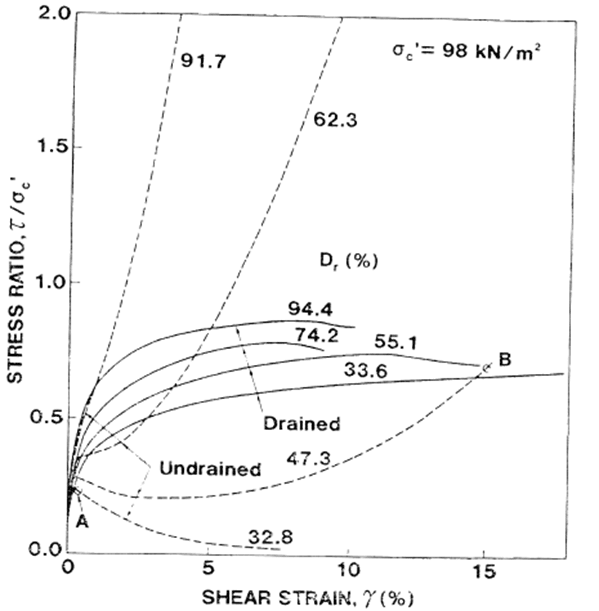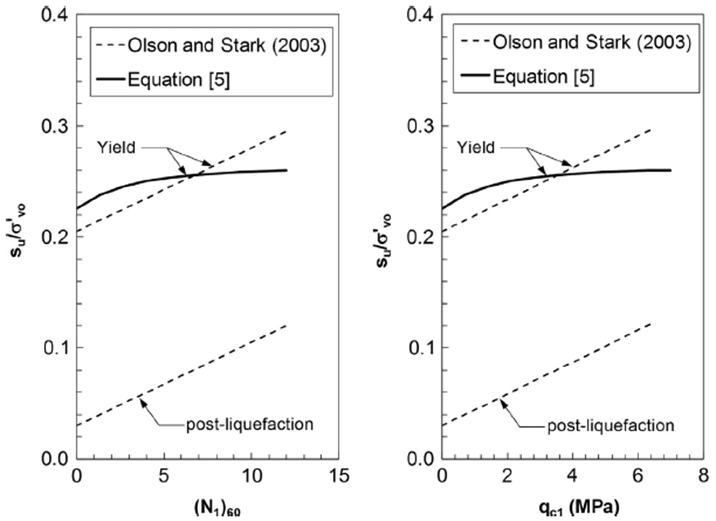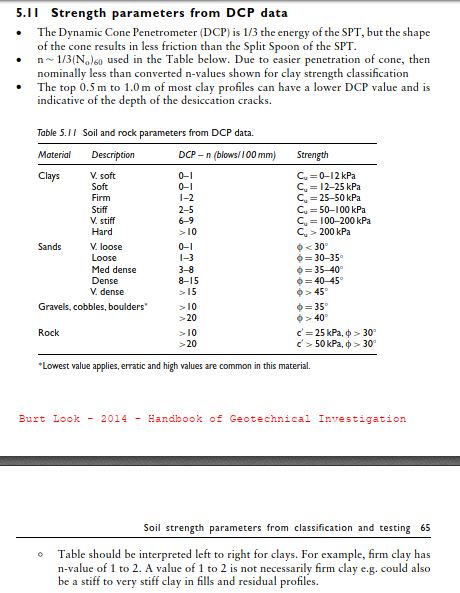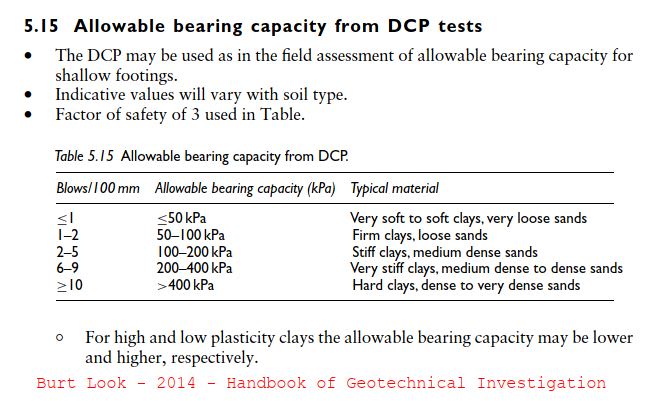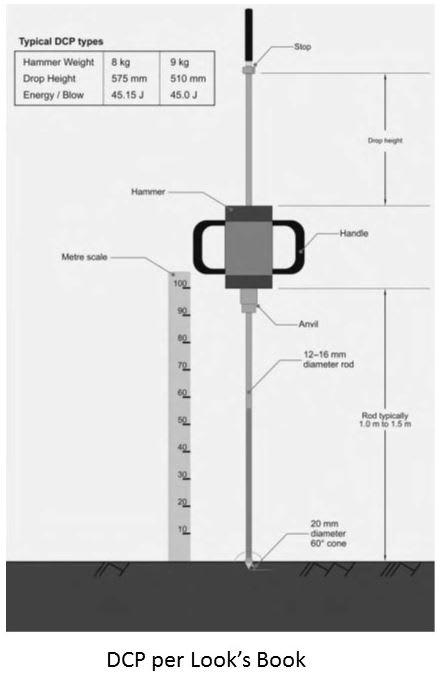nagatalluri
Geotechnical
- Jul 19, 2010
- 83
I am wondering if there are any correlations for DCP penetration index (mm/blow) to Undrained shear strength and friction angle in Granular soils. I checked ASTM D6951 and it only offers correlation with CBR value but cannot find anything relating to undrained shear strength for clays or friction angle for granular soils. Your help is appreciated

